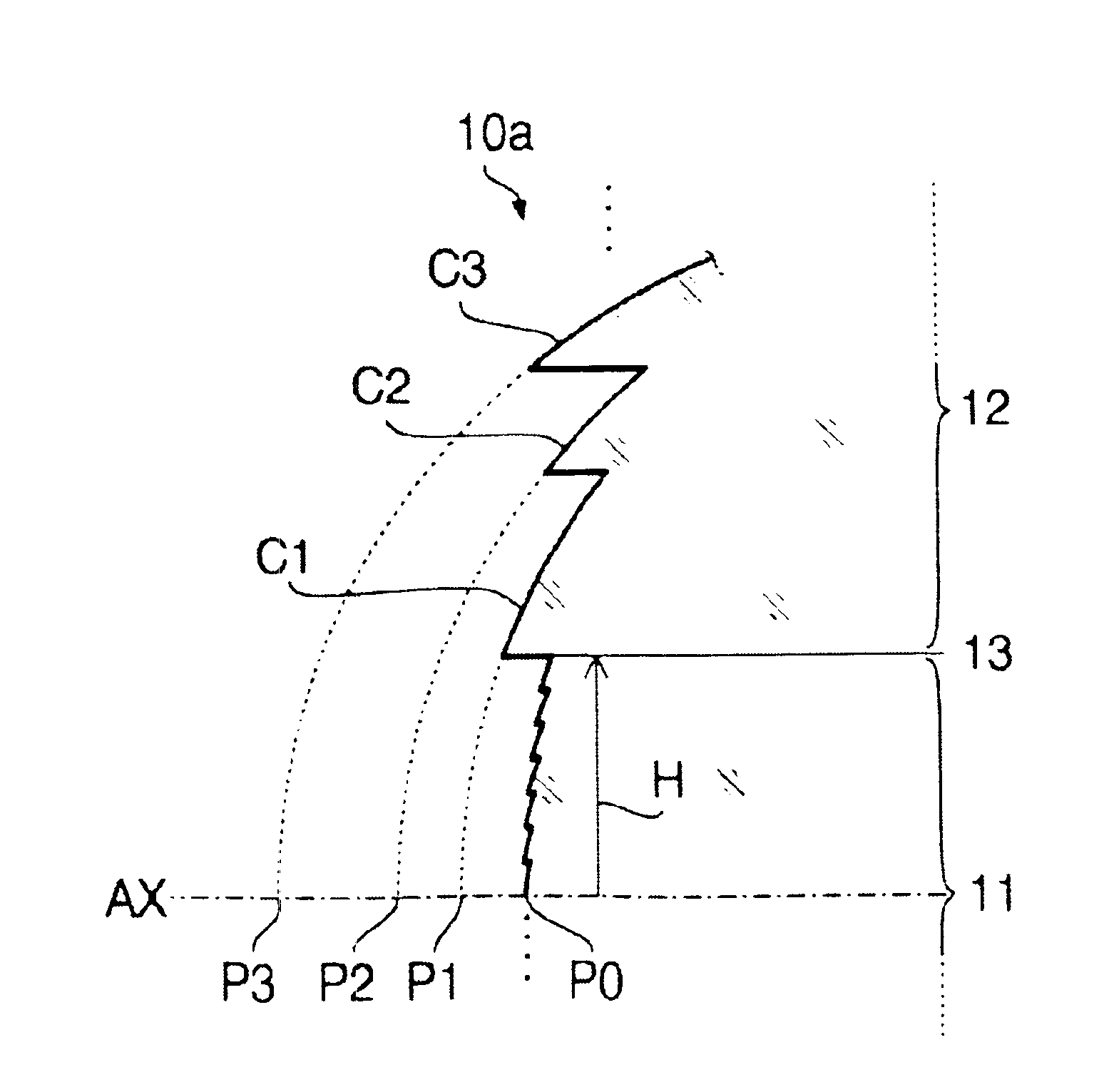Objective lens for optical discs
a technology of optical discs and objects, applied in the field of objects, can solve the problems of insufficient spot diameter, unexpected large aberration, low light intensity of beam spots, etc., and achieve the effect of reducing the intensity of the side lobes around the center of the beam spots and preventing the increase of the intensity of the side lobes
- Summary
- Abstract
- Description
- Claims
- Application Information
AI Technical Summary
Benefits of technology
Problems solved by technology
Method used
Image
Examples
example 1
FIG. 1 shows the sectional form of the objective lens 10 of the first example. A second example, which will be described later, also has a similar sectional form. Specific numerical configuration of the objective lens 10 of the first example is shown in the following Table 1.
TABLE 1Optical Disc20A20BDesign Wavelength785nm655nmCentral Thickness1.40 mmFocal Length2.42mm2.40mmDesign NA0.510.65
In the Table 1, the “design wavelength” is the wavelength that is most suitable for the recording / readout of the optical disc (20A, 20B). The numerical configuration shown in 1 applies also to the second example. The following Table 2 shows the height range (hmin-hmax [mm]) from the optical axis AX) of the inner area 11 and that of each annular zone formed in the outer area 12.
TABLE 2hmin ≦ h < hmaxInner Area 110.000 ≦ h < 1.314Outer Area 12Zone C11.314 ≦ h < 1.365Zone C21.365 ≦ h < 1.430Zone C31.430 ≦ h < 1.443Zone C41.443 ≦ h < 1.453Zone C51.453 ≦ h < 1.467Zone...
example 2
The specific numerical configuration, the functions specifying the aspherical shape of the second surface 10b, and the optical path difference function coefficients of the objective lens 10 of the second example are similar to those of the first example, and thus repeated description thereof is omitted for brevity. The following Table 8 shows the height range (hmin-hmax [mm]) from the optical axis AX) of the inner area 11 and that of each annular zone in the outer area 12 of the objective lens of the second example.
TABLE 8hmin ≦ h < hmaxInner Area 110.000 ≦ h < 1.326Outer Area 12Zone C11.326 ≦ h < 1.350Zone C21.350 ≦ h < 1.417Zone C31.417 ≦ h < 1.435Zone C41.435 ≦ h < 1.446Zone C51.446 ≦ h < 1.456Zone C61.456 ≦ h < 1.470Zone C71.470 ≦ h < 1.520Zone C81.520 ≦ h < 1.560
As shown in Table 8, the outer area 12 of the objective lens 10 of the second example includes eight annular zones C1-C8. In Table 8, the value shown at “hmax” of the in...
PUM
 Login to View More
Login to View More Abstract
Description
Claims
Application Information
 Login to View More
Login to View More - R&D
- Intellectual Property
- Life Sciences
- Materials
- Tech Scout
- Unparalleled Data Quality
- Higher Quality Content
- 60% Fewer Hallucinations
Browse by: Latest US Patents, China's latest patents, Technical Efficacy Thesaurus, Application Domain, Technology Topic, Popular Technical Reports.
© 2025 PatSnap. All rights reserved.Legal|Privacy policy|Modern Slavery Act Transparency Statement|Sitemap|About US| Contact US: help@patsnap.com



